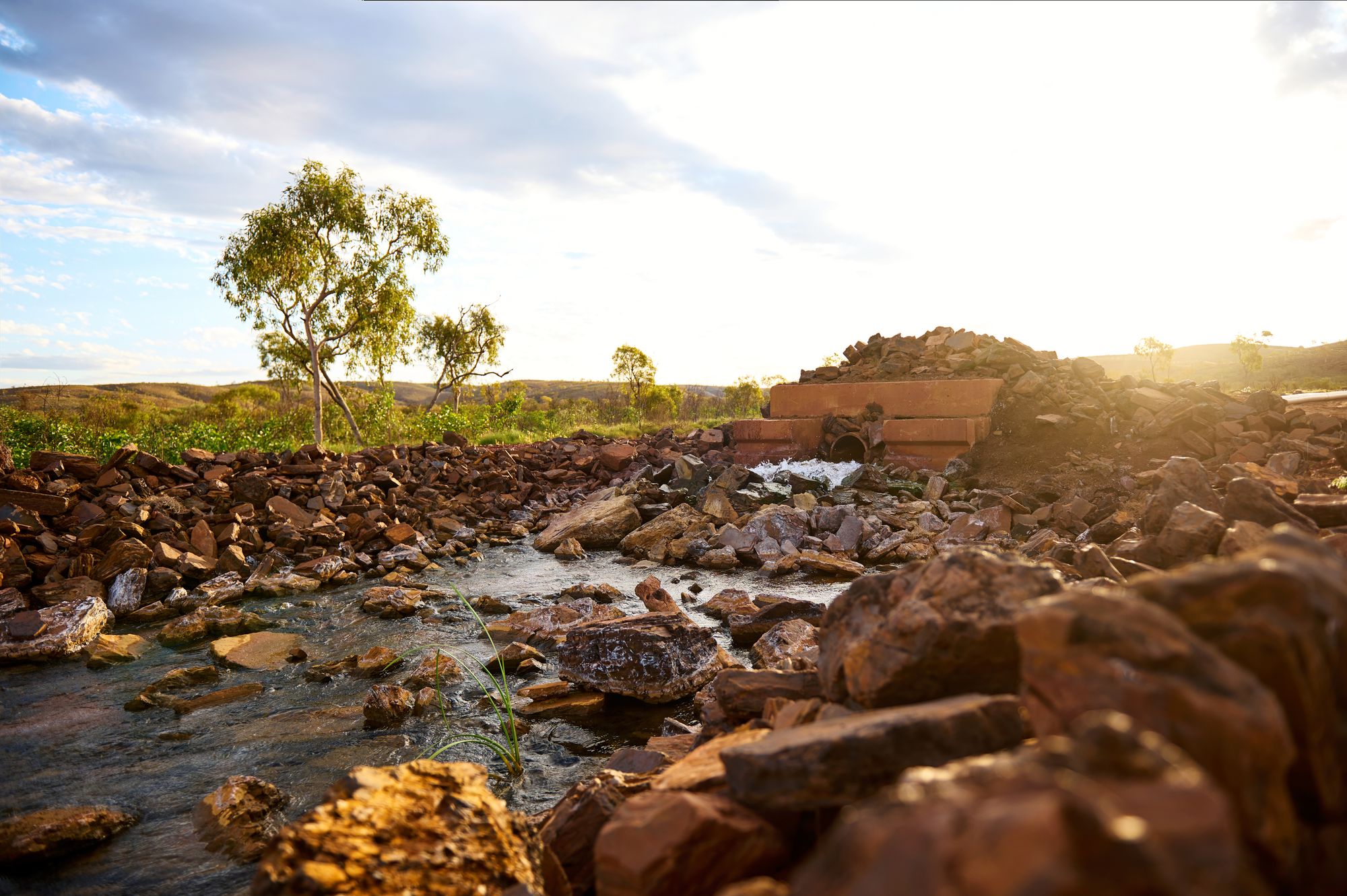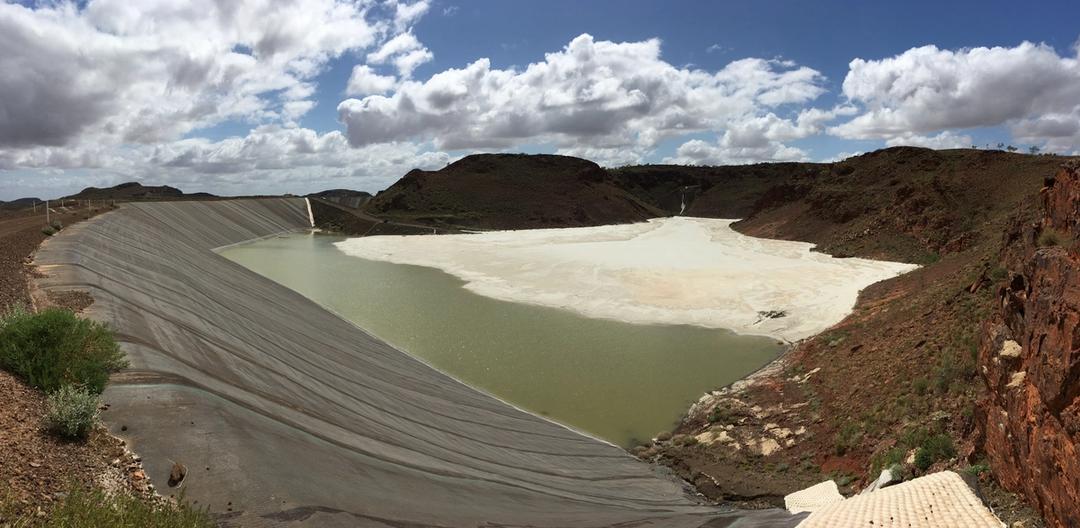Water stewardship
Water is a vital resource for all aspects of life and is a key resource for our operations and supply chain. We are committed to advancing our understanding of water risks and value while seeking new opportunities for water efficiency.

Our management approach
Water is a key input to our operations, being used for exploration and resource definition drilling, dust suppression, domestically in our camps and offices, vehicle and infrastructure washdown, and processing at our operational sites.
MinRes designs, constructs, operates and maintains water withdrawal, storage, treatment and discharge facilities in adherence to relevant standards and local legislative requirements.
We also conduct comprehensive baseline assessments and modelling during the planning stages of our projects and during the life of the mine.
We take a holistic approach to water management, with several corporate policies and procedures.
Our water performance is reported to the Board monthly, with progress and targets shared at Sustainability Committee meetings.
We also have a dedicated Water Working Group responsible for matters and activities related to the management, conservation and preservation of water resources located within and adjacent to our operations.

Risk management
Our management approach to water-related risks is holistic and considers the contextual setting of the natural environment and the interactions MinRes and our host communities have with water resources.
We manage water-related risks through several mechanisms including our corporate Enterprise Business Risk Register and Operational Risk Registers maintained at each of our mine sites.
We proceed with operational activities when the residual risks to water values are considered acceptable and on the basis that there is no material risk to high-quality or scarce regional water resources.
To support risk identification processes, we assess at a catchment level our operations’ baseline water stress level, according to the World Resources Institute (WRI) 2021 Aqueduct Water Risk Atlas.
The WRI provides a high-level overview of baseline water stress and considers 13 critical metrics.
This is complemented by our local water context and analyses which inform our approach towards developing and implementing appropriate management actions for each operation based on their level of risk.
Our year-on-year approach will evolve to reflect changes in risks and opportunities associated with water resources and to support our operational, host community and environmental water-related needs.
Community engagement
To ensure water is responsibly governed and to protect water quality and water access, it is important to be a collaborative partner within the communities where we operate.
As we progress our water stewardship journey, we engage with stakeholders to identify risks and opportunities associated with water resources and share updates on our work, the water quality of the watershed, and technologies being implemented to improve water quality.
Refer to our Community page for further information on our engagement with communities.
Potential risk:
Changes to the intensity and frequency of extreme events such as cyclones, floods and droughts have the potential to increase the risk of damage to our facilities and existing infrastructure such as access roads, rail lines, mining pits, processing equipment and port facilities.
Management actions/controls:
We complete flooding assessments to consider extreme rainfall events. We utilise information on the sustainability of groundwater resources under various climate forecasts, undertaken by the Department of Water and Environmental Regulation, when setting groundwater allocation limits in areas we operate. Further to this, we conduct technical assessments to review the recharge rate of groundwater resources to ensure appropriate management and maintenance.
Potential risk:
The geographical locations, changing climatic conditions and nature of our operational activities have the potential to impact our ability to access secure water resources.
In addition, our lithium operations are largely reliant on the availability of high-quality water supply to support the beneficiation process.
This reliance could potentially impact our operations’ water security and may result in the costly import of water into certain locations.
Management actions/controls:
We optimise water management across all mine stages by implementing management controls through environmental impact assessments, ongoing hydrological monitoring and assessments.
Our dedicated teams review our operational water balance by adopting the Water Accounting Framework to understand the water resource risks and opportunities, enhancing the transparency around water stewardship.
Our Wodgina and Mt Marion operations have been designed to improve the efficiency of water consumption through recirculation and built-in water recovery circuits. Monthly reporting ensures ongoing governance of this aspect.
Potential risk:
Rainwater, water from dewatering and water from other sources can cause offsite run-off and erosion, and potentially collect sediment, nutrients and other contaminants.
Management actions/controls:
All our operations are designed as “closed loop” systems, except Iron Valley which requires approved discharges related to its large water surplus from mine dewatering activities.
We conduct comprehensive baseline assessments and ongoing monitoring of groundwater quality, routinely inspecting and maintaining drainage system erosion and sediment control structures.
At our Iron Valley operation, physiochemical water parameters are monitored for discharge water and in receiving creek lines to assess and act on any potential threats to aquatic fauna and groundwater dependent ecosystems.
Discharge points are designed to reduce the impacts of potential erosion and scouring on the receiving creek line, and thereby reduce potential impacts on the receiving environment.
Potential risk:
If managed incorrectly, mine closure activities have the potential to impact the hydrological regimes of groundwater and surface water, cause adverse environmental and social impacts, and increase capital costs associated with the management of water resources.
Management actions/controls:
Effective asset closure and management are integral across our operations to ensure safe, stable, non-polluting and sustaining landforms remain.
All our mine sites have Mine Closure Plans which are developed and revised in consultation with key stakeholders and ensure all potential risks to both groundwater and surface water are appropriately considered.




